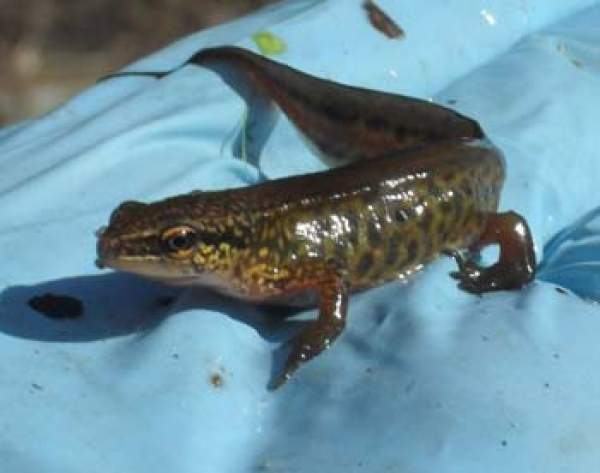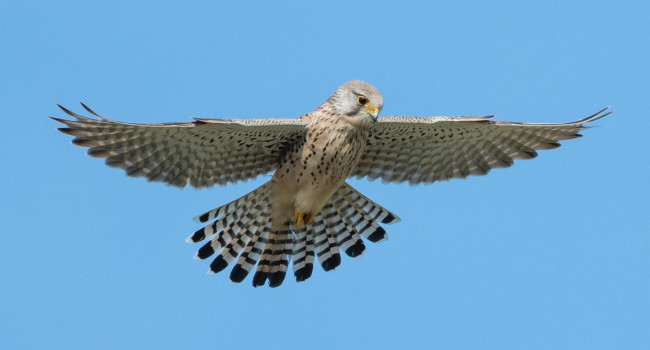Palmate Newt
Lissotriton helveticus

The Palmate Newt is the smallest of our native newts – less than 9 cm long. Unlike the Smooth and Great Crested Newt, the breeding males do not have a crest. However, they are easier to tell apart as they have a filamentous tail and dark, webbed hind feet. The females are very similar to those of the Smooth Newt. Both the male and female Palmate Newt have a pale pink/orange belly with less spots than the Smooth Newt and no spots on the throat.
Palmate Newts prefer shallow, acidic ponds like those found in heathland and woodland. They typically hibernate from November to March under stones or compost heaps, although if it is not to cold, young adults may hibernate in the mud of pond beds.
Palmate Newt larvae are predated on by many other species. The adults are usually taken by Kingfishers, Grass Snakes and larger fish.
Like all species of UK newt, Palmate Newts feed on both aquatic and terrestrial invertebrates. They also eat frog spawn and the occasional tadpole.
Palmate Newts tend to breed between March and July, though this is weather- and food-dependent. The male puts on an elaborate display to attract the female, who will then lay a few eggs per day over a few weeks. The larvae usually metamorphose into air-breathing juveniles six to nine weeks after hatching.






Share this page